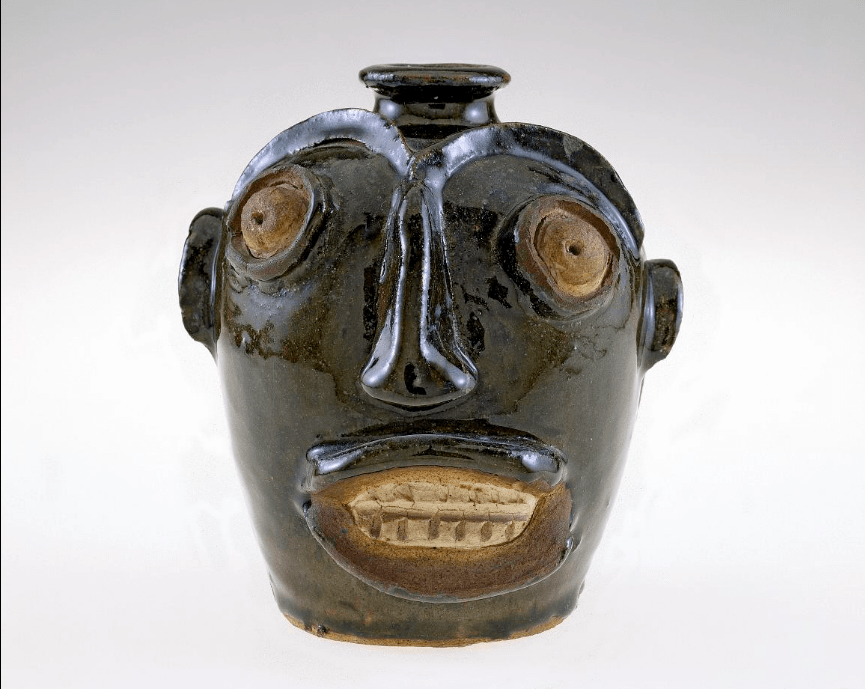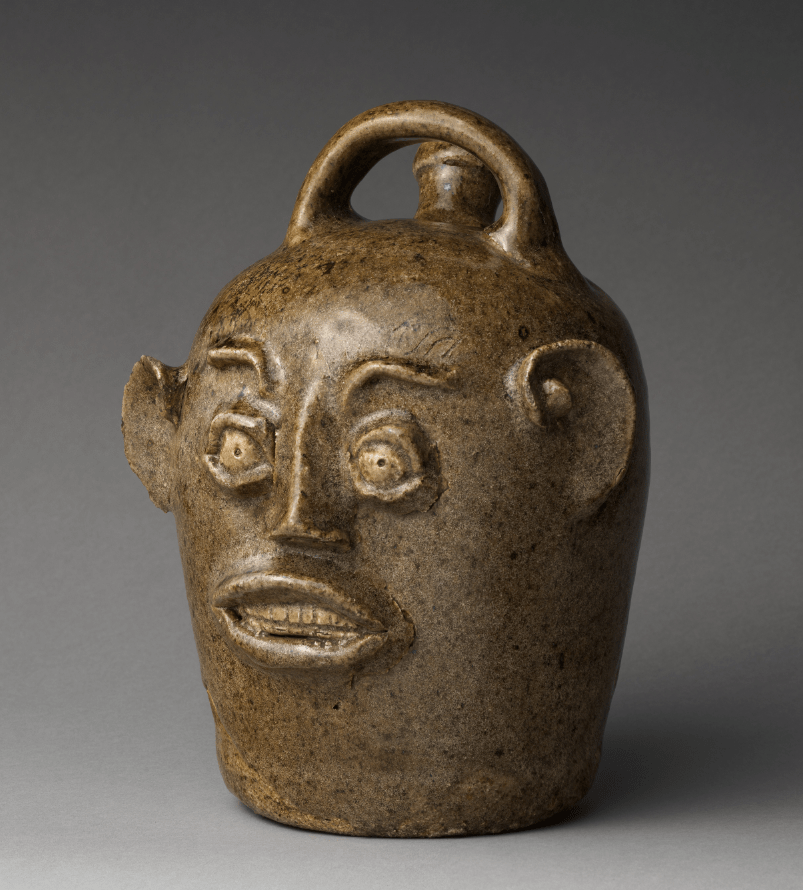Stoneware “face jugs” were made by African slaves and freedmen in the area around the Edgefield District of South Carolina. Production seemed to have begun prior to the American civil war (1861-1864), perhaps back to the early 1800s. There are collections of these face jugs in the Metropolitan Museum of Art in New York as well as in the National Museum of American History (part of the Smithsonian Museum) in Washington, D.C.

While there were probably many of these jugs made during the 1800s, the Met notes that only about 160 of them are known to have survived. The Met has 3, and the Smithsonian Museum has 15 or so. Each museum website has background information on the items in their collection. I’ve gleaned some notes for this article from the two institutions.
The Smithsonian Museum’s collection of face jugs are presented in an interesting online article entitled “American Face Vessels“. One example is shown below.

The Smithsonian website notes, “The origins of the southern face vessel tradition are largely un-documented. Some enslaved black potters in South Carolina certainly began making face vessels in the mid 1800s, possibly inspired by African burial rituals or as charms used in religious ceremonies.” The Met website notes that “…distinctive features of the jugs, notably the kaolin inserts for the eyes, relate in style and material to ritualistic objects of the Congo and Angola region of western Africa, whence many slaves in South Carolina descended.”


Astonishing pieces, excellent photographs and great text. There are a few blogs as interesting as yours, John Walthier.
LikeLike
Thank you very much, Celso. I appreciate the comment.
LikeLike